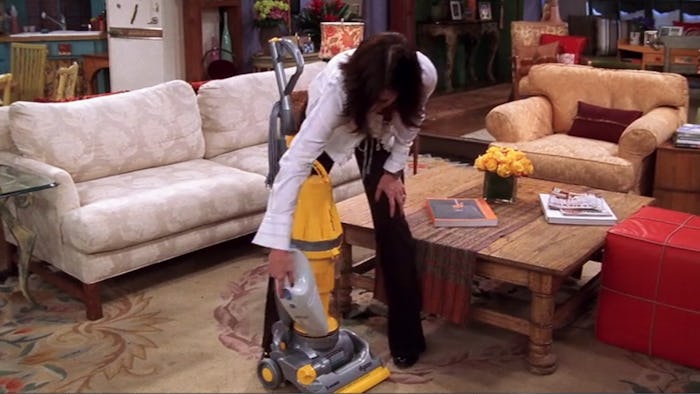Life

Here's How To Properly Sanitize Your Home, According To A Microbiologist
This year’s flu season is turning out to be one of the worst in recent history, so it’s important to take extra steps to protect your family from the spread of germs. When someone in my family gets sick, I pull out an arsenal of cleaning procedures and supplies. I wash and clean everything I can, from bed sheets and stuffed animals, to countertops and doorknobs. My family thinks I’m nuts, but these are important steps in preventing germs from spreading. If someone in your house has been sick, you should know how to properly sanitize your home.
Romper reached out to New York area microbiologist and public health safety expert Irrem Jamal, M.Sc, who says that in order to properly clean your house when someone is sick, you should start by frequently sanitizing the most touched surfaces in your home, including door knobs, faucets, and countertops. According to the Mayo Clinic, cold and flu germs can live longer on hard surfaces than on soft surfaces, so it’s important to keep them continuously sanitized.
If you are OK with the idea of using chemicals, Jamal says you can use a diluted bleach cleaning solution, consisting of one tablespoon of bleach mixed with a quart of water, or you can use any other germ-killing solution (like Lysol) to wipe down surfaces. She says that you may even want to keep antibacterial wipes (like Clorox wipes) on hand for quick and easy sanitization — they’ll work great for small areas, especially right after a sneeze or cough.
Not everyone is comfortable using harsh chemical cleaners, whether it’s because of a pet, small child, or chemical sensitivity. Jamal says that if you prefer using a chemical-free solution, you can use a handheld steam cleaner, which shoots hot steam on to surfaces to clean and sanitize them. I’ve been using a steam cleaner for years to clean my countertops and other hard surfaces, but I find that it is also great tool for sanitizing upholstered furniture and mattresses.
While it may feel a bit tedious, it is really crucial to swap out hand and face towels everyday. Try giving each person in your home their own fresh towel to use each day if possible. You can even temporarily get rid of towels altogether and use paper towels, suggested ABC News, because sharing a towel with an infected person will just lead to germs spreading. The website also suggested cleaning and washing your bed sheets, blankets, and stuffed toys in warm or hot water to make sure they are also free and clear of any leftover germs. Considering how much time a sick person spends in their bed, coughing, sneezing, and congested, it makes sense to wash their bedding thoroughly.
When someone is sick and still contagious, it’s important to try and sanitize surfaces continuously, including their toothbrush. Healthfully recommended washing toothbrushes with soap and really hot water, or leaving the toothbrush in a vinegar soak overnight to disinfect and sanitize it. Although getting reinfected with the same virus is not likely, explained Today, a germ infested toothbrush could grow other harmful bacteria and expose other members in your household to the virus.
A little bit of fresh air can help, too. Opening up a window in the house, even if it’s just a crack, can help replenish the stale air in your rooms with fresh air, explained Backup Care, and it will also get help get rid of any lingering smells in the house. The website also suggested emptying out any trash cans that are filled with tissues or garbage.
Dealing with an illness like the flu or a cold is hard enough, so the last thing you want is for it to spread to other family members. With a little elbow grease and attention, your home should be free of those pesky germs in no time.
Check out Romper's new video series, Romper's Doula Diaries:
Watch full episodes of Romper's Doula Diaries on Facebook Watch.